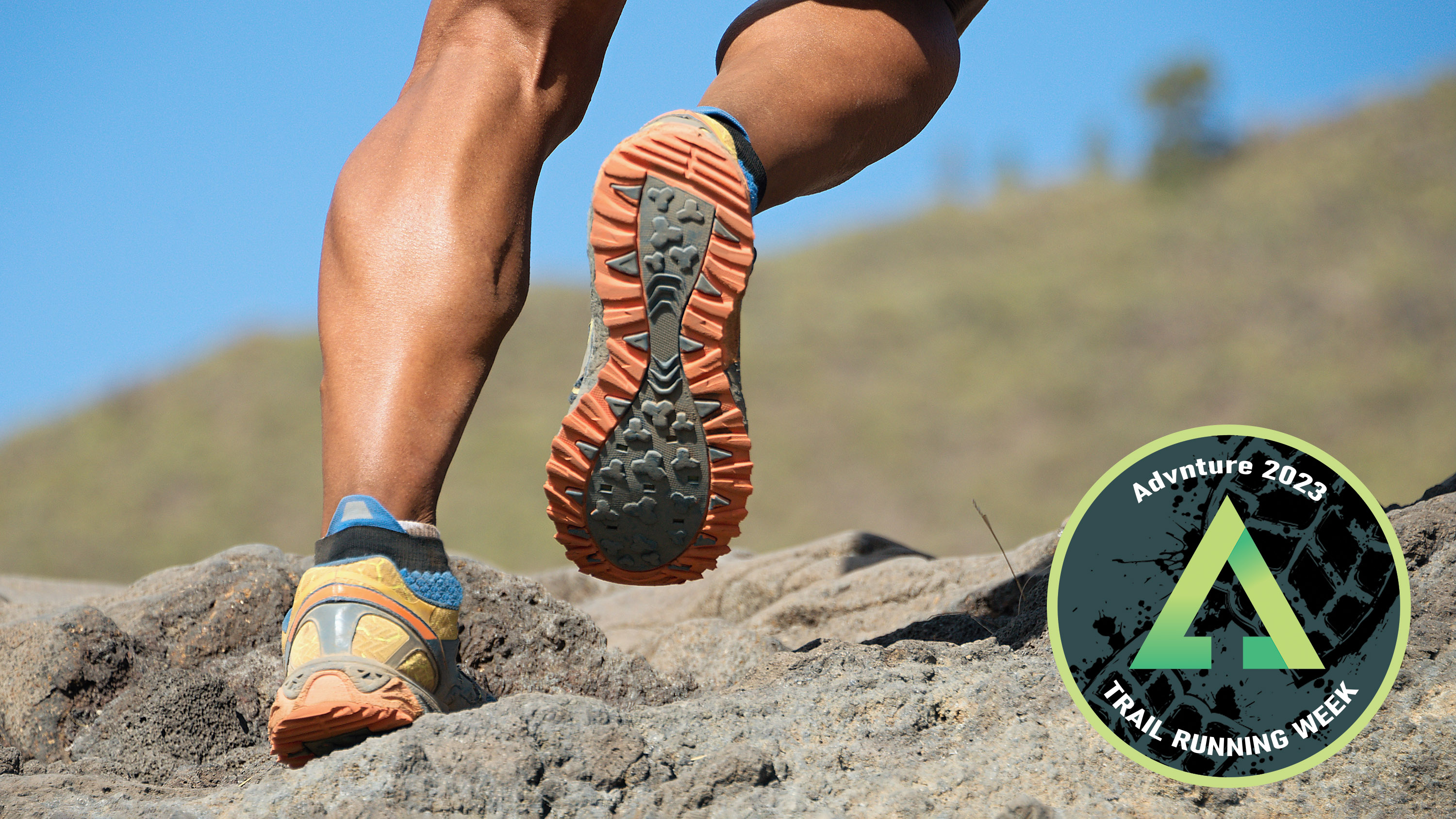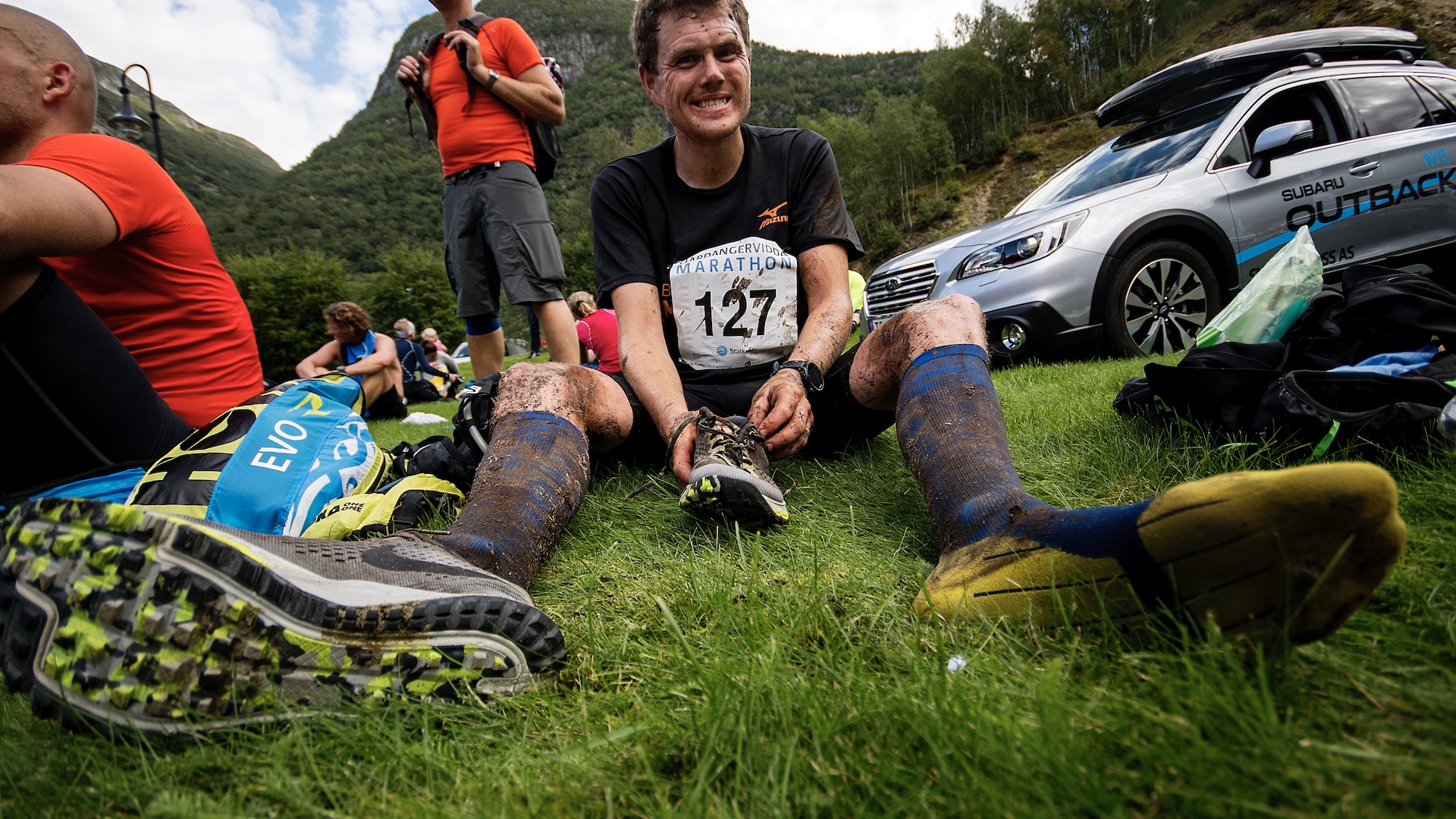The anatomy of a trail running shoe
Learn the difference between the shoe's midsole and the outer, the tongue and the last, and more

Trail running shoes are an essential item of kit for runners who like to get off the tarmac. To understand the anatomy of the best trail running shoes, we show you around the different parts and features. Knowing the different parts of a shoe will also help you with how to tell when you need new running shoes.
Outsole: This is the part of a trail running shoe that forms the outer layer, between the foot and the ground. The outsole is key to giving you traction on the trails and hills, while also offering protection against stones, rocks and tree roots.
Outsoles are almost always made from rubber, which delivers traction and durability. Some brands, such as inov-8, have taken the rubber a step forward by adding a highly durable and flexible product called graphene.
The type of outsole that you need will depend on where you run. A shallow tread will be more suitable for hard-packed trails, while soles with lugs of varying depths will be good for more aggressively gripping the terrain, such as where it is muddy or stoney.

Midsole: The midsole of a trail running shoes is the layer of cushioning sandwiched between the outsole and the upper. Most midsole layers are made of a foam type material (usually EVA) and create a softer layer that both absorbs shock from the impact of running and also gives support to your foot.
Some people like a lot of midsole cushioning, such as that delivered by HOKA One One shoes, while others prefer much less. Midsole cushioning will also depend on where you are running and how much protection you require from the trails beneath your feet.
The drop: This is the difference in thickness of the sole between the heel and the toe. Some people prefer a minimalist zero drop, while others like a larger drop of up to around 12mm.
All the latest inspiration, tips and guides to help you plan your next Advnture!
The drop will affect how your foot strikes the ground and also the potential stretch of calf muscles. A zero drop shoe means you will feel more of the ground with the entire foot and your calf will be at a more extended stretch when you land, while a higher drop encourages the heel to make contact with the ground first. It can also reduce the stretch and stress of the calf when running,
There is a middle ground with drops of between 6mm and 8mm.
Last: This is the mould of the shoe and the part that dictates the outline of the shoe, and, therefore, the shape and fit of the shoe. There are several different shapes of mould, including curved, semi-curved and straight. These moulds will suit different feet shapes. So ,for example, a straight last is better for flatter feet, while feet with high arches will be better in a curved last.

Insole: This might also be called the sockliner and is the area of the shoe that your foot sits on top of inside the shoe. The insole is the part that offers additional support and cushioning. The insole is typically made of EVA foam or OrthoLite.
The insole is one area of trail running shoe that can be replaced if it is worn or it can be changed for preference. Some runners like to use the same insole in every shoe, regardless of brand, because it can offer different levels of cushioning and support.
Upper: This is the section of the trail running shoe that is the entire top area. It usually includes the tongue and laces. The upper keeps your foot in place and also protects it from the environment that you are running in.
Uppers for trail shoes are usually made of fabric and brands will claim various levels of breathability and durability. Look for different widths of uppers, too, depending on your feet size.
Tongue and laces: This area of the shoe can make or break comfort. Do you prefer a padded tongue or a lighter tongue? How about the lacing system? Some lacing systems offer one-handed and quick-tie systems with the aid of a toggle, while others are based on a more traditional lacing format.
It is worth having a think about the trail shoes that you find most comfortable and then comparing the tongue and lacing system with any trail shoes that you plan to buy.
Toe cap: The toe cap is an extra area of rubber, usually part of the rand, that rises up and over the front of the shoe to offer greater protection against rocks and debris on the trails.
Toe box: The toe box is the space inside the front of the shoe. It is where your toes and the forefoot fit into the shoe. This is usually the widest part of the foot and it is important that the toe box area is wide enough to be comfortable while running.
Remember that your feet will swell in warm weather or when running longer distances, so a larger volume of teo box might be a good idea. Equally, a toe box should not be so wide that it doesn't support the foot.,
You’ll need to try different brands to see what size of toe box suits you better.
Heel cup: The area to the rear of the shoe, where the heel sits, is called the heel cup. Sometimes it is referred to as the hell counter.
A comfortable fit is vital and different brands and shoes will suit the shape of different feet. For example, if you have a narrow heel, you will want a shoe that is narrower at the heel cup.
Rand: This is usually made of rubber and it is the extra layer, forming a strip, that circuits the lower part of the upper area of the shoe. The rand sits between the upper and the outsole and creates an extra protection against the elements of the trail.
Some trail running shoes, especially those that need to cope with mountain terrain, will have more rand than less. The rand might also rise up at the heel and toe area of the shoe to add protection to these areas.
This article is part of Advnture's Trail Running Week 2023 (running from Monday 27 March to Sunday 2 April), our in-depth look at how to train smarter, choose the right gear, and have fun when things get muddy.

Fiona Russell is a widely published adventure journalist and blogger, better known as Fiona Outdoors. She is based in Scotland and is an all-round outdoors enthusiast with favorite activities including trail running, mountain walking, mountain biking, road cycling, triathlon and skiing (both downhill and backcountry). Aside from her own adventures, Fiona's biggest aim is to inspire others to enjoy getting outside and exploring, especially through her writing. She is also rarely seen without a running skort! Find out more at Fiona Outdoors.
